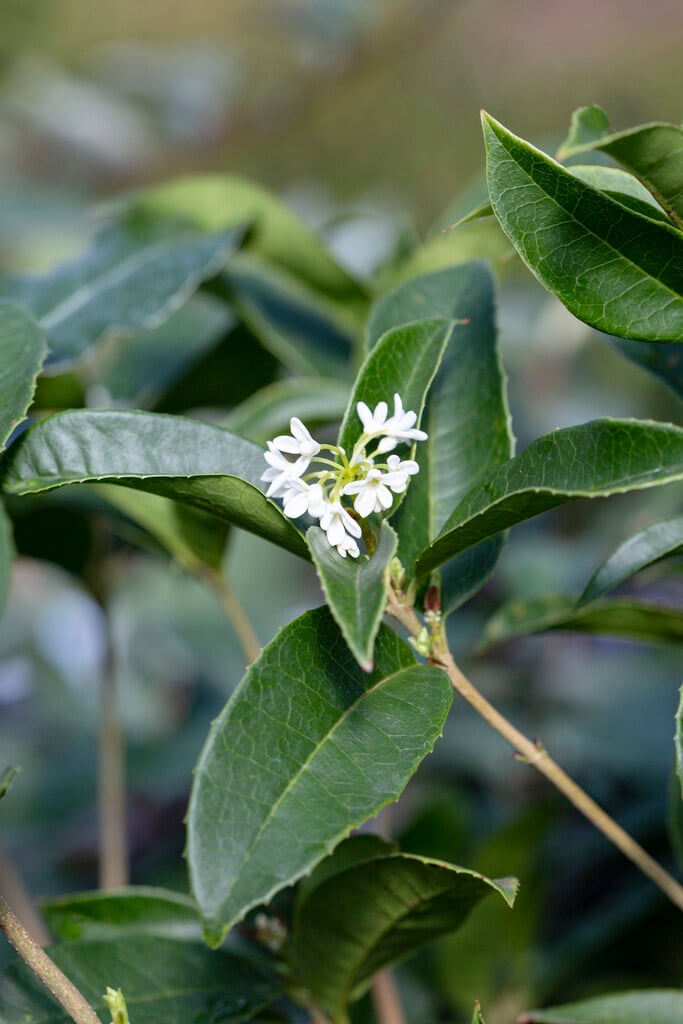Osmanthus fragrans
fragrant olive
A vigorous, upright, evergreen shrub or small tree to 5m tall, with glossy, leathery, finely toothed dark green leaves. Small clusters of highly fragrant, tubular white flowers are produced in autumn, and sometimes in spring and summer; they are followed by ovoid, blue-black fruit to 1cm long. Grow against a warm wall in mild districts; elsewhere it is best grown in a temperate greenhouse
Size
Ultimate height
2.5–4 metresTime to ultimate height
10–20 yearsUltimate spread
1.5–2.5 metresGrowing conditions
Moisture
Well–drainedpH
Acid, Alkaline, NeutralColour & scent
| Stem | Flower | Foliage | Fruit | |
| Spring | Green | |||
|---|---|---|---|---|
| Summer | Green | |||
| Autumn | White | Green | ||
| Winter | Green | Black Blue |
Position
- Full sun
Aspect
South–facing or West–facing
Exposure
Sheltered Hardiness
H3Botanical details
- Family
- Oleaceae
- Native to GB / Ireland
- No
- Foliage
- Evergreen
- Habit
- Bushy
- Genus
Osmanthus can be evergreen shrubs or small trees with leathery, opposite leaves and small, usually fragrant, tubular white, yellow or orange flowers with 4 lobes, followed by ovoid blue-black fruits
- Name status
Correct
- Plant range
- Himalayas, China
How to grow
Cultivation
Outdoors, grow in fertile, well-drained soil in full sun, with protection from cold, drying winds; against a south- or west-facing wall is ideal. Under glass, grow in peat-free, loam-based potting compost in full light with shade from hot sun. When in growth, water freely and apply a balanced liquid fertiliser monthly; water sparingly in winter
Propagation
Propagate by sowing seed as soon as ripe. Root semi-ripe cuttings in summer with bottom heat. Layer in autumn or spring
Suggested planting locations and garden types
- City and courtyard gardens
- Climber and wall shrubs
- Conservatory and greenhouse
- Wall side borders
Pruning
See pruning group 9
Pests
Generally pest-free
Diseases
May be susceptible to honey fungus
Love gardening
Sign up to receive regular gardening tips, inspiration, offers and more
View our Privacy Policy
Get involved
The Royal Horticultural Society is the UK’s leading gardening charity. We aim to enrich everyone’s life through plants, and make the UK a greener and more beautiful place.

